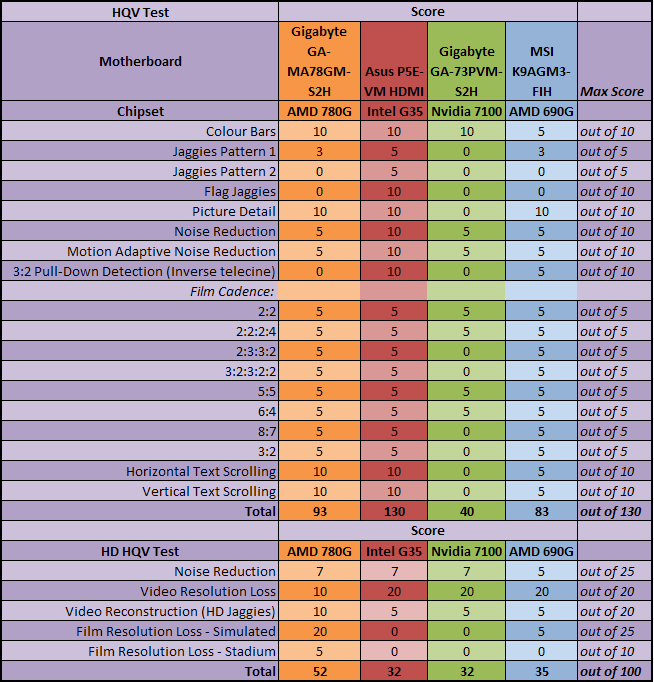
HQV and HD HQV
Silicon Optix, makers of HQV and HD HQV, provides an industry standard benchmark for looking at video quality by providing tests that cover all areas of video processing playback: (motion adaptive) de-interlacing, noise reduction, 3:2 Pull-down detection (Inverse telecine), Film Cadence and Film Resolution manipulation.The tests are scored out of 130 and 100 for the HQV and HD HQV tests respectively, where a score of 130 and 100 in each case is considered ‘perfect’.
We set the output at 1080p to test the video processing of the chipset, as opposed to the display. While we left the "performance settings" on auto, we did adjust the de-interlacing settings to find the best solution available from the drivers.

The HQV score is, well, lower than we'd expected. What we're recorded is an average performance – the chipset image quality can be improved to an extent, but it requires significant manual attention to settings between PowerDVD and Catalyst Control Center. The "automatic" settings basically didn't work and everything had to be tried and retried manually, which obviously affects the score.
In addition to this, the output quality for some of the tests was still poor, regardless of the settings tried – the de-interlacing tests for example proved less than perfect, especially so compared to the Intel G35 which was both excellent quality and required no extra work on our behalf.
3:2 pulldown (inverse telecine) didn't work at all either and, even despite checking that this setting was enabled in the CCC, it didn't detect it when required during HQV. Of course, the detection can be improved with drivers, although the Catalyst 8.3 RC3 we used "is essentially Catalyst 8.3 [WHQL]" – so this is the current performance end users should see for now.
The performance is still marginally improved compared to the AMD 690G, but it's still far from perfect like Intel's G35. The HD HQV scores on the other hand were higher than the competition by several marks, although not as good as we've seen from a Radeon HD 3850 for example, but let’s not forget that the discrete card has significantly more processing power available to it. Even then though, AMD’s 780G chipset still scores less than 50 percent.
For the price though, it's still better than the Intel alternative and, if you're going to pay the extra for the Asus P5E-VM HDMI and a 1080p capable CPU, you might as well just buy a discrete graphics card and plug it into a 780G board.
Addendum 12th March 2008: The scores were updated slighty after we found we made a mistake and mixed up two of the results in HD HQV. The overall result hasn't changed though, the only change is that the difference between the AMD 780G and the last generation products has extended slightly.

MSI MPG Velox 100R Chassis Review
October 14 2021 | 15:04








Want to comment? Please log in.